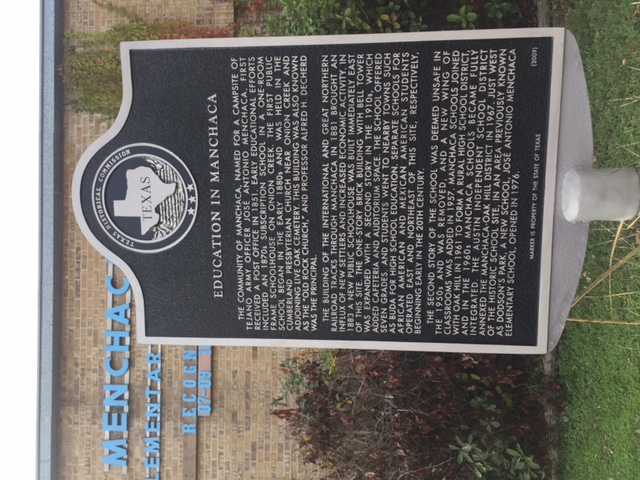JOSÉ ANTONIO MENCHACA [1800–79] (1800–1879)
José Antonio Menchaca, Tejano army officer, was born in San Antonio in January 1800, the son of Juan Mariano and María Luz (Guerra) Menchaca. He married Teresa Ramón in 1826, and they had four children. Menchaca was not in San Antonio during the siege of Bexar, but returned shortly after Gen. Martín Perfecto de Cos was forced to leave. In February 1836 he left for Gonzales, where he joined Juan N. Seguín's company of Texas Mexicans and fought in the battle of San Jacinto. After the revolution he returned to San Antonio, served several terms as alderman, and became mayor pro tem in July 1838. In July 1842 Menchaca was appointed to command a frontier company. His troops patrolled the area between the San Antonio River and the Rio Grande. When Adrián Woll led a Mexican army into Texas in September 1842, Menchaca participated in the defense of San Antonio and was wounded in the leg. In February 1844 Sam Houston appointed him an Indian escort. Menchaca helped organize a club of Texas Mexicans in support of Horace Greeley, the presidential candidate of the Liberal Republicans and Democrats in 1872. Along with eighteen other Bexar residents of Mexican descent, Menchaca wrote a letter in 1875 to the comptroller of public accounts claiming discrimination by the Texas government against Hispanic veterans of the revolution. Menchaca was a member of the Holland Lodge, the oldest chapter of the Masonic order in San Antonio. He died on November 1, 1879, and was buried in the San Fernando Cemetery No. 1 in San Antonio. In 1936 the Centennial Commission erected a marker at his grave. It has been asserted by residents of the town of Manchaca in Travis County that their village was named for the nearby Manchaca Springs, which were named for Jose Antonio Menchaca.
Education in Manchaca
The community of Manchaca, named for a campsite of Tejano army officer Jose Antonio Menchaca, first received a post office in 1851. Early educational efforts included an 1870s subscription school in a one-room frame schoolhouse on Onion Creek. The first public school began in the early 1880s and was held in the Cumberland Presbyterian Church near Onion Creek and adjoining Live Oak cemetery. This building was also known as the "Old Rock Church," and professor Alfred H. Decherd was the principal.
The building of the International and Great Northern Railroad tracks through Manchaca in 1881 brought an influx of new settlers and increased economic activity. In 1883 a new public schoolhouse was built immediately east of this site. The one-story brick building with bell tower was expanded with a second story in the 1910s, which added cafeteria and auditorium space. The school offered seven grades, and students went to nearby towns such as Buda for high school education. Separate schools for African American and Mexican American students operated east and northeast of this site, respectively, beginning early in the 20th century.
The second story of the school was deemed unsafe in the 1950s and was removed, and a new wing of classrooms was added in 1957. Manchaca Schools joined with Oak Hill in 1961 to form a rural high school district, and in the 1960s Manchaca Schools became fully integrated. The Austin Independent School District annexed the Manchaca-Oak Hill District in 1967. Just west of the historic school site, in an area previously known as Dodson's park, a new school, José antonio Menchaca Elementary School, opened in 1976.
On January 13, 2020 Menchaca Elementary opened it's doors to a modernized campus, funded through the 2017 bond program. This is the fifth Menchaca elementary building in the last 137 years. The modernized Menchaca elementary was one of the first schools to open, funded by the 2017 bond program. The new school has a unique design that includes large windows that allow natural light into each class. Learning areas are spacious with new flexible furniture that allows teachers to change the layout of the classroom, making it new and different every day. Early discussions on the design focused on the natural beauty of the site, which included several Texas oak trees. Three buildings with shaded outdoor collaboration space were designed around the heritage of the oak trees. The buildings form two courtyards linked by a second-story bridge that houses an innovative library media center and makerspaces specifically designed for the school. More than 30 percent of the site is open, vegetated space, creating direct links between the outdoors and learning environments. The new school is an Austin Energy Green Building and the campus is designed to meet LEED certification, including a commitment to air quality and overall wellness for the students and faculty.

